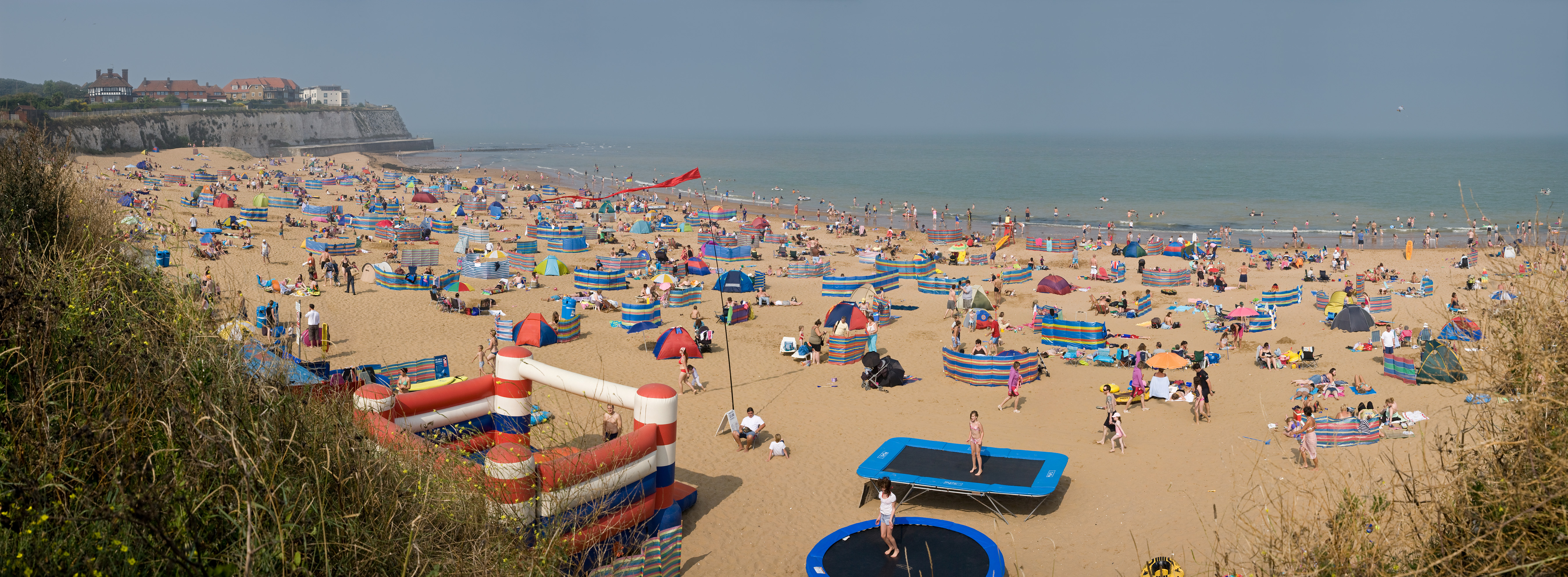5 Tips for Safe Summer Swimming

Swimming season has arrived! Most people know to slather on sunscreen at the pool or the beach, to wear a life jacket when boating, and to not leave children unattended in the water. But here are a few lesser-known safety tips that will help your summer go off without a hitch.
Bring vinegar to the beach
If you're enjoying a lovely dip in the ocean and suddenly feel a searing pain on a patch of your arm or leg, you have probably been stung by a jellyfish. According to Jennifer Ping, an emergency medicine physician at Straub Clinic and Hospital in Honolulu, you should disregard the widespread myth that peeing or pouring alcohol on your wound makes it hurt less. In fact, these watery liquids can reactivate any nematocytes, or jellyfish stinging cells, that are stuck to your skin, causing them to release more toxins. Vinegar is a much better treatment, because its high acidity deactivates the nematocytes. After dousing your wound with vinegar, scrape off all the remnants of jellyfish tentacle using a credit card or other flat object. Leftover vinegar should be applied — liberally, in our opinion — to pier fries.
Swim parallel to shore to escape a riptide
Have you ever been swimming in the ocean when you suddenly found yourself being sucked out to sea? Congratulations on making it back alive: you were probably caught up in a riptide, a strong seaward current that develops near the shoreline. Riptides form when incoming waves build up an underwater sandbar close to shore. The waves push more and more water in between the sandbar and the shore until a narrow section of this sandbar collapses, giving the water an escape route. That water rushes seaward through the gap, creating an extremely strong but narrow "rip" current.
Riptides are so dangerously strong that it's useless trying to swim against them — you'll only get tired out. Instead, swim parallel to the shoreline; the riptide will be narrow enough that you can easily move out of it, after which you can swim back to the beach.
Don't drink pool water
Get the world’s most fascinating discoveries delivered straight to your inbox.
"A swimming pool is basically a community bathtub without the shampoo," said Dr. Thomas Boyce, a pediatric infectious diseases specialist at the Mayo Clinic Children's Center. "Chlorine does not kill germs instantly and, in fact, does not kill cryptosporidium at all, which is a common germ that causes water-associated gastrointestinal illness." [Public Swimming Pools: How Dirty Are They?]
If that doesn't deter you from quenching your thirst in the pool, consider this: the water may also be laced with poop. More than 1 in 5 Americans don't know that swimming while they have diarrhea puts other swimmers at risk for water-borne illnesses, according to a survey by the Centers for Disease Control and Prevention. Boyce advises parents to take kids on bathroom breaks often, change their diapers in the bathroom, not poolside, and wash toddlers' bottoms with soap and water before they enter the water. But in case those tips don't reach everyone, take your water breaks poolside.
Hold your nose when jumping into rivers and lakes
Untreated freshwater can contain some particularly nasty microbes, including the deadly "brain-eating" amoeba Naegleria fowleri. Each year, a handful of Americans get one of these killers lodged deep in their sinuses by plunging into a water hole without plugging their noses first. The amoeba infects the brain by working its way up from the nasal passages, and there's nothing much doctors can do about it. Follow this safety tip especially stringently in the South, as warm freshwater poses the greatest risk. [Brain-Eating Amoeba Fatalities Linked to Common Cold Remedy]
Relax to float on your back
If you fall out of a boat, get pulled out to sea by a current, or by some other catastrophe find yourself alone in the great wide ocean, don't panic. You need to keep calm in order to conserve energy until a rescue crew arrives, and fortunately, relaxing is also the best way to stay afloat. Breathing deeply draws more oxygen into your body, lowering your overall density and thereby buoying you up in the water. Lying back also helps you float, because it makes it more difficult for water to flow around your outstretched body and force it downward compared to when you're upright like a pencil. Lie back by using the water as a pillow for your head and shifting your weight from your legs to your shoulders. Drawing your arms back toward your head helps lift the rest of your body toward the surface of the water.
If necessary, kick your legs and wave your arms very gently, cupping your hands to push water downward and turning them on edge to slide them upward. But most important, relax.
Follow Natalie Wolchover on Twitter @nattyover. Follow Life's Little Mysteries on Twitter @llmysteries. We're also on Facebook & Google+.
Natalie Wolchover was a staff writer for Live Science from 2010 to 2012 and is currently a senior physics writer and editor for Quanta Magazine. She holds a bachelor's degree in physics from Tufts University and has studied physics at the University of California, Berkeley. Along with the staff of Quanta, Wolchover won the 2022 Pulitzer Prize for explanatory writing for her work on the building of the James Webb Space Telescope. Her work has also appeared in the The Best American Science and Nature Writing and The Best Writing on Mathematics, Nature, The New Yorker and Popular Science. She was the 2016 winner of the Evert Clark/Seth Payne Award, an annual prize for young science journalists, as well as the winner of the 2017 Science Communication Award for the American Institute of Physics.



